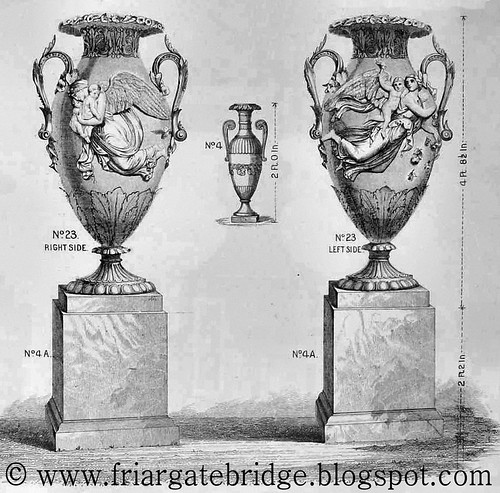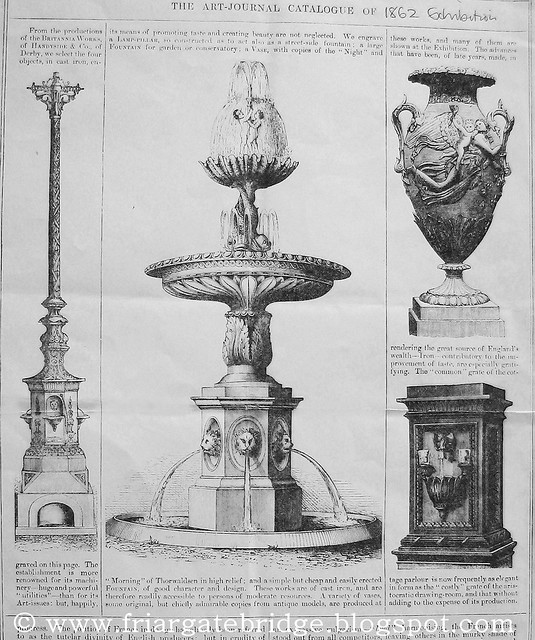This is a Night and Morning Vase by Andrew Handyside, which is based on Bertel Thorvaldsen’s Night and Day plaques.
The Swiss Gardens have had a £2.8 million revamp thanks to the Heritage Lottery fund. There are 13 listed structures on the site and the Handyside vase is one of them.
The Britannia Foundry established a reputation with ornamental work, it was well known for producing elaborate vases. They had great success at the 1851 Great Exhibition.
They also achieved a Gold Medal "Ornamental Fountains and Vases" at Birmingham in 1872, and at the 1871 Cordova Exhibition in Argentina.
Handyside had their own dedicated catalog for fountains and urns which I have a copy of which is very useful in my research of Andrew Handyside work and identifying its products around the world.
For the 1862 International Exhibition in London they provided a cast iron fountain and several vases. One of these vases was the "Night and Morning" vase, this is the model that
you can see wonderfully restored in the Swiss Gardens here.
This is Vase Design No. 23 on Page 60 of my 1879 publication "An Illustrated book of Designs for Fountains and Vases, costing from £1 to £1200 manufactured by Andrew Handyside"
A photograph of the restored vase :

Here is this model of vase in my 1879 publication "An Illustrated book of Designs for Fountains and Vases, costing from £1 to £1200 manufactured by Andrew Handyside" It provides dimentions and good views of the amazing design :

Here is a page from the The Art Journal Catalogue of the International Exhibition 1862 and it shows four items that Andrew Handyside exhibited at the show. Their "Night and Morning Vase" is in the top right of the page.
 |
| The Art Journal Catalogue of the International Exhibition 1862. |
Here is a photograph of the very same vase before its restoration:

Here is another photograph of the vase in April 2011 before its restoration :
https://flic.kr/p/9BG7Hi
Map Location:
View my Andrew Handyside World Map to see the exact location of this vase on the world map.
My world map is the result of hundreds of hours of research into the company, plotting out each item as I find it.
Can you help find more Andrew Handyside stuff ?
If anyone out there knows of any other vases around the world bearing the Handyside badge that I have not mentioned yet then please get in touch with details, location, photographs etc.
Thanks
Andy


